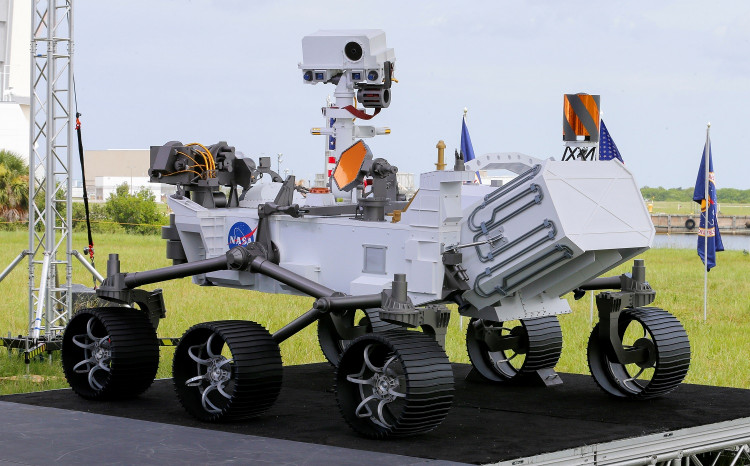NASA's Perseverance rover successfully spit out rock fragments that had been obstructing its Mars-sampling equipment since late December.
Although the un-choking method had not before been tested, the engineers on the Mars expedition discovered it to be "straightforward," as the team stated in an earlier blog post. It entailed pointing the drill with a clogged test tube to the ground and rapidly turning it until the rocks dropped out.
The crew even used its Mastcam-Z science camera to catch the moment the Perseverance rover spewed forth the pebbles. The video, which was shared on Twitter, shows the rover's drill revolving as a little bit of rock falls to the red Martian surface.
"In order to keep #SamplingMars, I've emptied my latest partial sample," the team said in the tweet. "Watch closely to see one piece of cored rock drop to the surface in this movie. Thankfully, I can reuse this tube for another sample from the same rock."
The Perseverance rover successfully drilled into a Martian rock and obtained a sample a few weeks ago (the 6th rock core ever collected by a spacecraft on another planet). After the sample was extracted, the rover did what it did best: it went to store it in a sample tube inside its belly.
Perseverance keeps all of its sample collection equipment there, including a spinning drill carousel, which is a wheel with several drill bits. Next to the carousel are 43 sample tubes waiting to be filled with alien world fragments.
On Dec. 29, however, something went wrong: pebbles obstructed the transfer of the drill bit and sample tube into the carousel. As a result, the rover's scientific operations were halted. Since then, the Perseverance team has attempted to devise a technique to remove the obstructive debris chunks.
The team recently instructed the rover to rotate the bit carousel. That efficiently removed two of the four rock fragments that were lodged there. That means there are two more to go. However, according to NASA, the way they are positioned appears to have no effect on the machine's operation.
On Jan. 17, the sample tube containing the rover's most recent partial core sample was also emptied. Perseverance used its robotic arm to rotate the drill and position the open end of the tube above the ground. Some of the debris that fell out was recorded by the camera on its head. Fortunately, the sample tube can now be reused.
The team is currently deciding on the next actions to take. Hopefully, the rover will begin operations shortly and return to drilling into the Jezero Crater's rocks.



